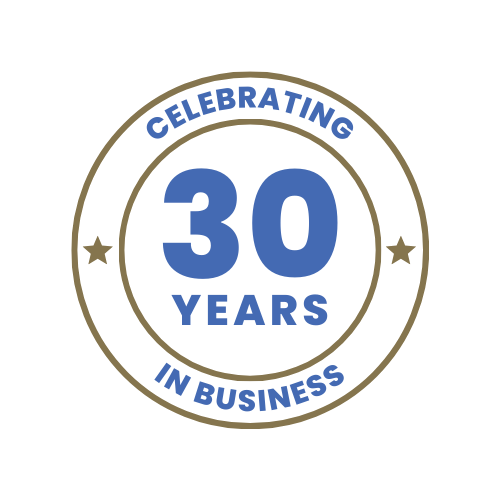Clarity Equals Accountable
- By geff@wsielevateddigital.com
- •
- 02 Jun, 2018
- •
“Healthy Organization” Foundation #4: Culture.
We just concluded our 4th ADVANCE management and leadership workshop of the year and, as always, a major topic of interest and conversation was “accountability”. It seems all managers, leaders and directors, from top to bottom in the organization, struggle with this fundamental component of being a “healthy leader”. Why is that? The typical answer we get at Comer & Associates is, “It’s hard to hold people accountable because it demands confrontation and that’s uncomfortable.”
While it is certainly true that the human interaction involving difficult conversations is challenging, it is more often the case that you simply may not have the right processes or tools in place to effectively hold people accountable. The basic formula is simple:
- Set crystal clear expectations.
- Have an effective follow-up process.
- Apply consequences, as needed, to ensure you’re getting the performance and results you need.

Crystal Clear Expectations
After a conversation with your boss, your subordinate, a peer or any team member critical to your performance, you can always be certain that what is in your mind is NOT what is in their mind. We enter every conversation with our own unique framework of assumptions. Our dialogue partner has a different framework and we rarely spend the time necessary to get to maximum clarity with one another. Communication is imperfect. You must spend the time to be absolutely sure your expectations are understood and that you both leave the conversation with the same understanding.
If I hear from one of my team members, “I’ll get that report done by Friday.” I’m thinking as the leader, “Great! I’ll have the finished, polished product ready to share with the management team by Friday.” The employee walks away thinking, “I’ll have a first draft ready by Friday for the boss to review.” The result is a lack of clarity and mismatched expectations. It’s very difficult to hold the team member accountable to a standard of performance you didn’t work hard enough to clarify up front. We assume people should know what they’re “supposed to be doing”. They rarely do.
Another important factor is that expectations can change in a complex and dynamic work environment where new customer demands or shifting operational realities are commonplace. The rule in this case is to renegotiate and reprioritize expectations as needed. Circumstances often change. Expectations should follow suit and be modified as priorities change. Make sure you are focused on the “vital few” items important to goal achievement and that everyone involved knows exactly which items to prioritize. You cannot hold someone accountable for performance on one project/task if several others have entered the picture since the original performance expectation was set. Always reset expectations and priorities with both the original team member and their team mates.
Effective Follow-up Process
If you do all the hard work to discuss, define, negotiate and set crystal clear expectations but have no system for following up on progress (and ultimately project/task completion), you might as well have not bothered to set the expectation in the first place. Why does this happen? The most common reason the follow-up process breaks down is that people get overly busy and we as managers “assume” (that word again!) that things are on track.
A key component of an effective follow-up process is a valid metric of performance. Some elements in business are both easier to measure and more likely to have a highly structured follow-up process in place i.e. the monthly sales or product/service quality review. Unique tasks and project-based activities are more prone to follow-up problems as performance metrics are not readily defined. Be sure to pause upon assignment of unique tasks/projects and determine what success and completion looks like with the employee(s) responsible for the accomplishment of the task/project.
Apply Consequences
I once had a client who, sales meeting after sales meeting, would just “talk about it” when sales reps did not meet their numbers. When I asked the CEO what the consequences were for not hitting sales targets, he ultimately had to admit, “There are none.” (In this case, the lack of consequences was directly related to the reality that there were no REAL expectations for performance.)
Consequences need to be judiciously applied and they must match the level of nonperformance demonstrated. A simple “accountability ladder” includes:
- Ask for updates throughout the project: Simply putting someone on the spot by asking how they’re doing with a project/task/effort automatically signals your interest and your expectation.
- Provide a statement of unacceptability: At some point, nonperformance must be acknowledged with a statement that basically says, “This is not acceptable.”
- Apply tangible consequences: Beyond words, tangible consequences can/should be applied. These may include getting written up, loss of privileges, removal from an assignment or anything else that goes beyond mere words. The ultimate tangible consequence to nonperformance would be termination.
And finally, eliminate the gray areas in goals, responsibilities, authorities and accountability. All businesses have gray areas but the more you have, the less likely you will be able to hold people accountable. Have you had a specific experience using these techniques to hold your team and yourself accountable?
Other Posts

I recently posted an article published in Forbes about T. Boone Pickens, famous for an active entrepreneurial life and his book, The First Billion is the Hardest . Every year around this time, he’s asked to share his wisdom, gathered over many decades, with some college graduating class in the U. S. The Forbes article includes six “Booneisms” he’s known for, but the one I like the most is, “A fool with a plan can beat a genius with no plan.”
Although the CEOs and senior managers I regularly work or interact with are certainly NOT fools, all too often they’re working without a plan. While it may be okay on Saturday to get up and “let the day take you”, that’s not a good recipe for business, large or small. Too much is at stake!
The ideal planning sequence takes place in the context of shared values and a true team of managers committed to each other AND a common goal. (I’ve often said to management teams, “You don’t have to like each other, but you MUST be able to communicate effectively and solve problems together as you work to achieve your objectives.”)


Yesterday, a friend and colleague said she was having trouble “holding herself accountable”. She wasn’t getting things done that she thought she should be, including some things she deemed important to the business. For perspective, this woman is running a business, supervising a stable workforce and keeping multiple clients happy. On top of all that, she’s a mom! (Can you say “busy”?)
The conversation quickly went to a few questions:
- What are you not achieving?
- Where’s the breakdown?
- What are your goals?


Effective communication is one of the key functions of management, yet we frequently find ourselves frustrated with others not understanding what we have shared. After we say our piece, we assume that others see things the same way we do but the only thing we can be sure of, even after a lengthy conversation, is that what’s in your mind is not exactly the same in their mind. We just hope the gaps are few and insignificant.
The problem is even worse if the communication comes in the form of a management “presentation” with little/no opportunity for dialogue. I once spent an hour presenting “how we make money” to a group of front-line employees: Revenue – (Material + Labor + Manufacturing Overhead + Other Overhead) = Profit. The presentation was complete with flipchart graphics. It was clear from some of the questions at the end of the presentation that some of the employees still looked at Revenue as the amount of money theoretically distributable to all the members of the company. While frustrating, this incident just confirmed how hard it is to be truly effective in your communication. Also, it’s important to keep in mind that the primary responsibility for the effectiveness of communication lies with whoever is sending the message.
Studies have shown that managers typically under communicate but think they did a good job. It’s not just executive management. This “failure to communicate” affects all members of an organization. If you are a middle manager, you have the challenge of communicating both up and down the chain of command. If you are a front-line team member, it’s important you effectively communicate any issues or challenges you face in the performance of your job so they may be resolved. Anything less than excellent communication, at all levels, negatively impacts relationships and hurts the bottom line.
Here’s a formula for communication success:
- Preparation:
- Understand your objective. Why are you communicating?
- Understand your audience. What do they need to know?
- Plan what you want to say.
- Choose the best communication channel:
- One-on-one conversation
- Team presentation/discussion
- Written document:
- Match your style to reader’s preferences
- Avoid jargon or slang
- Check your grammar and punctuation
- Check for tone and attitude
- Email/text for simple directions (NEVER email/text complex or negative content.)
- Consider:
- Cultural context of organization
- Potential emotional content
- Need for detail
- The need to ask and answer questions
- Draft:
- Decide exactly what to convey.
- As much as possible, use pictures, charts, diagrams.
- Verbal: prepare written notes to guide the conversation.
- Written: draft document/presentation for sharing. Review as necessary to ensure effectiveness. Send.
- If sensitive, solicit other inputs and get feedback prior to sending/engaging.
- Engage (Verbal):
- Be concise.
- Listen actively.
- Stay open.
- Be attentive and avoid distractions.
- Respect others’ feelings
- Don’t interrupt!
- Pay attention to body language.
- Ask questions to ensure understanding.
- Record all action items: What-Who-When.
- Follow Up:
- How effective was the communication?
- Did I/we achieve the stated objectives?
- What could we do to improve communication?
Effective communication is an art that all of us would do well to master, for our own good and that of our organization. Are you getting the results you want from your communication or are you constantly thinking, “Why don’t they get it?”
Comer and Associates, LLC develops great leaders and teams and facilitates projects that lead to growth and profit. Our April 11 – 13 ADVANCE management and leadership workshop will cover all the key functions of management, including communication.
Contact Us
We will get back to you as soon as possible
Please try again later
